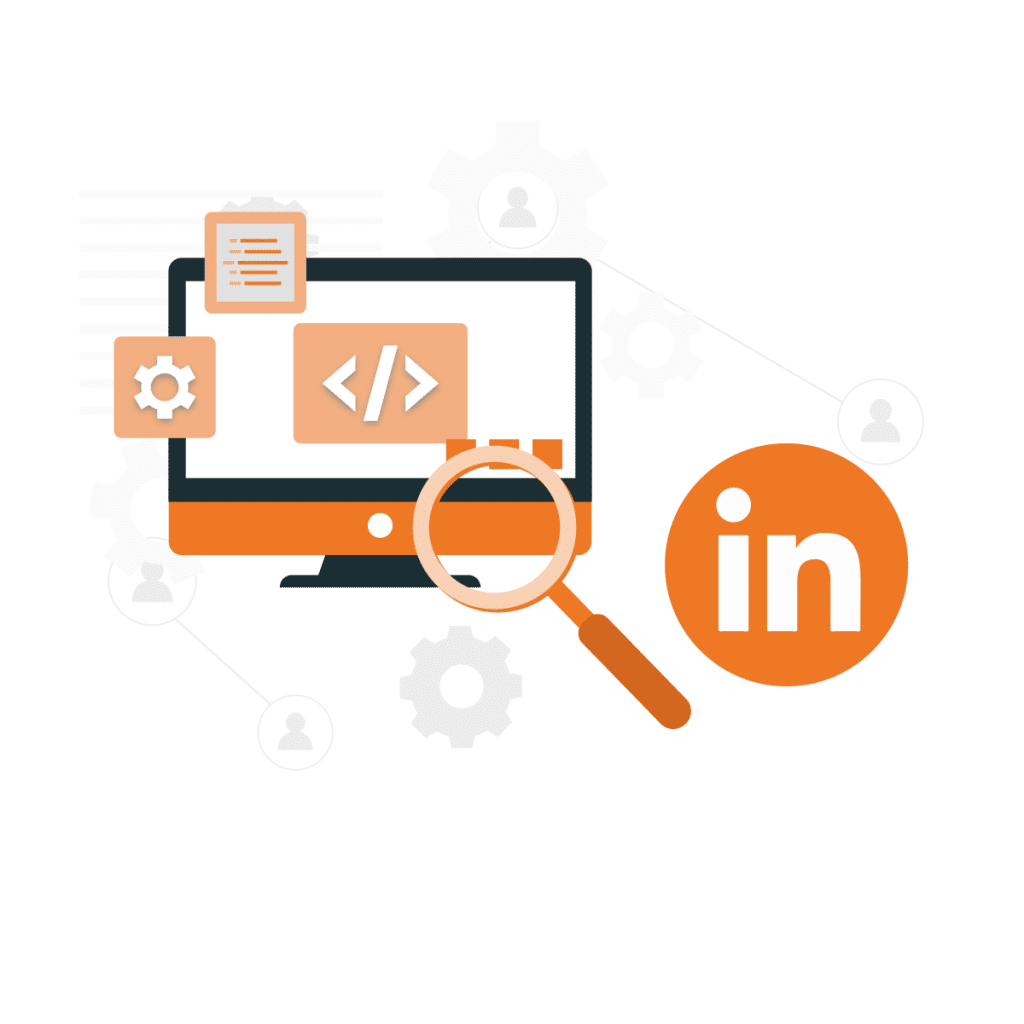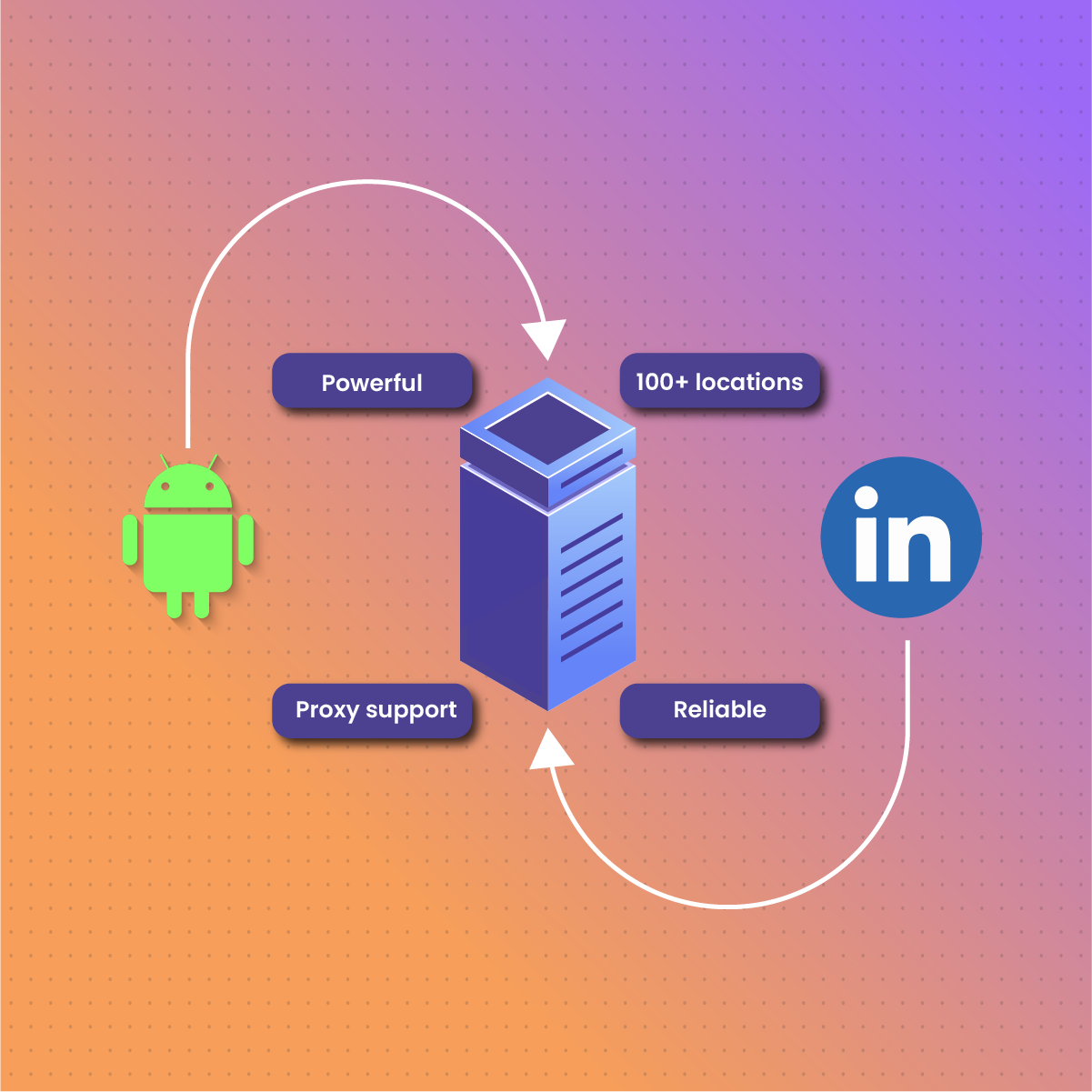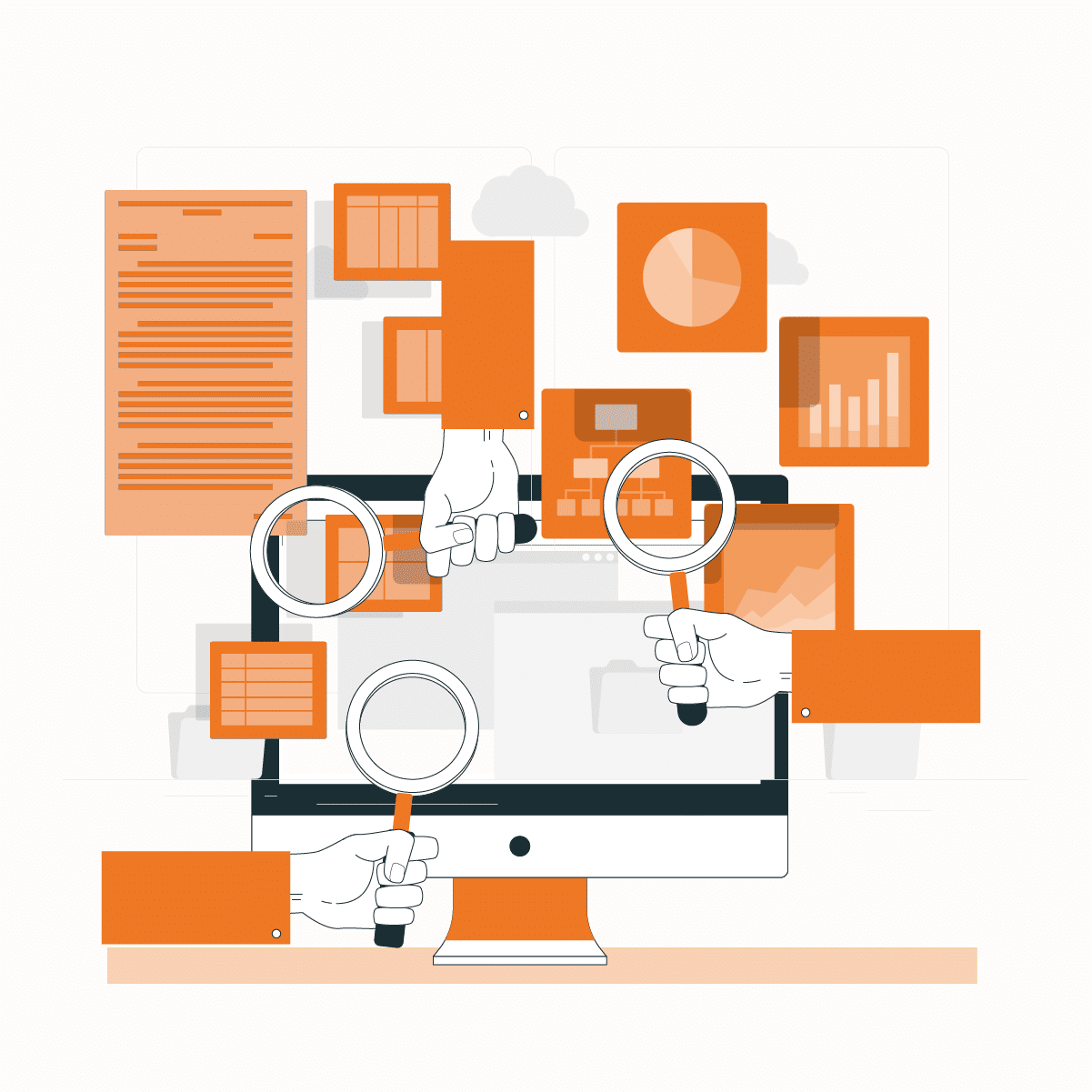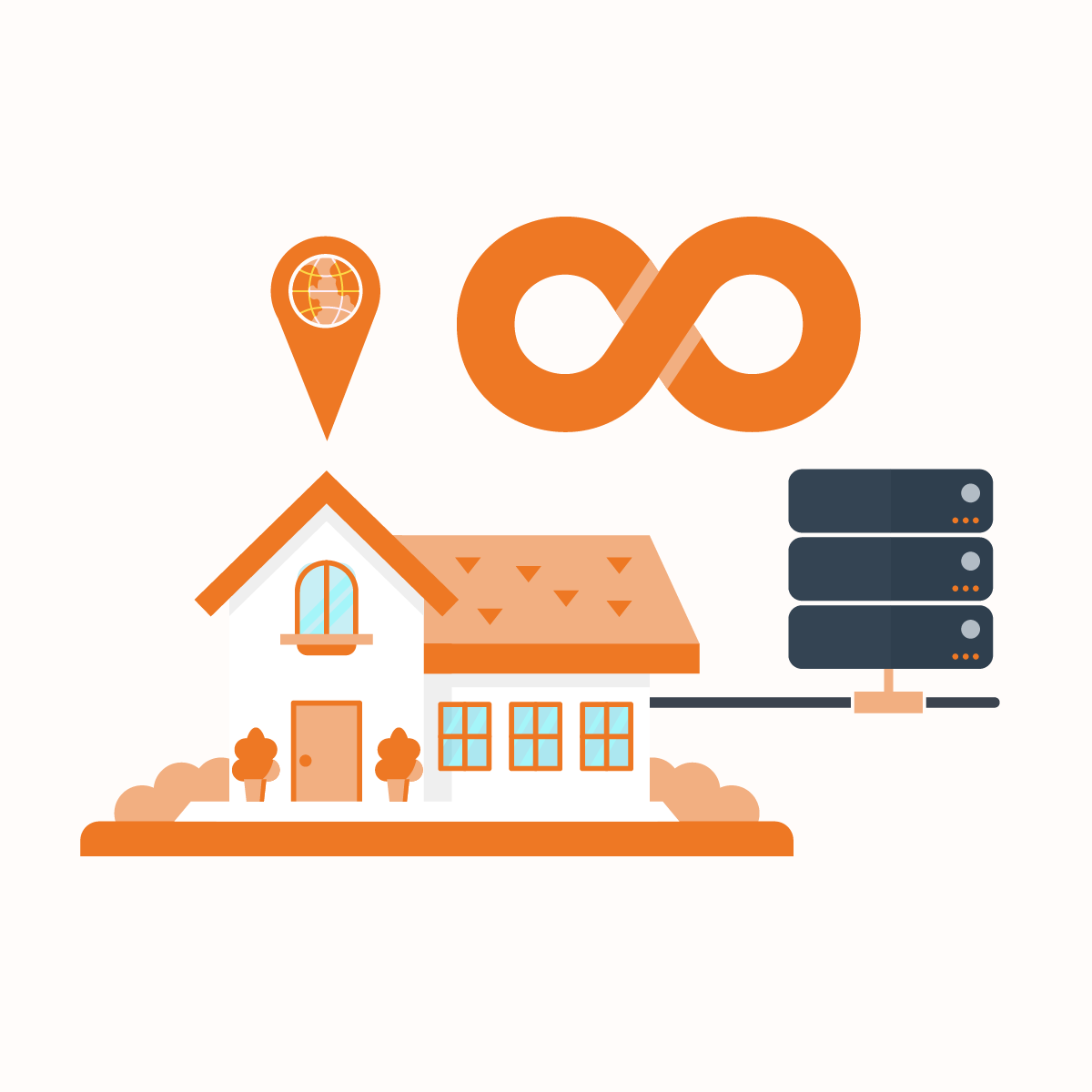Introduction
Data collection, management, and utilization provide significant competitive advantages for businesses. One of the places to get data is LinkedIn, which is a platform for professionals and has over 900 million users from various places in the world.
Therefore, it becomes necessary to address the subject of LinkedIn data scraping. In the past, experts used to manually go through numerous LinkedIn profiles to find potential business leads. However, this could not have been easy and definitely time-consuming.
This guide will examine how LinkedIn data scraping works, the tools used, its significance, and much more.
Sounds exciting? Let us dive in!
What is LinkedIn Data Scraping?
LinkedIn data scraping is a technique for profile scraping and data extraction. LinkedIn is a networking platform that presents a unique opportunity for employers, job seekers, and recruiters to connect with each other. Therefore, LinkedIn data scraping gives you access to the wealth of information on this professional networking platform, including connections, work history, and educational background.
LinkedIn, a networking website, is used by businesses to research competitors, find new workers, and stay up to date with industry trends. Understanding how LinkedIn data scraping works allows you to maximize the data.
How Does LinkedIn Data Scraping Work?
LinkedIn data scraping involves the use of automated tools or scripts like Python scripts to extract data from the platform. LinkedIn data scraping tools work by retrieving the public profile web page and fetching data from it. It is important to take note that LinkedIn data scraping tools may violate the platform’s terms and conditions. Don’t worry; we will cover the legal aspects of LinkedIn data scraping in this guide.
First, the LinkedIn data scraping tool requires a list of target LinkedIn profile URLs or specific search queries like company name or job title to begin the data collection. The tool then sends an HTTP request to the target URLs.
LinkedIn data scrapers crawl web pages to fetch the HTML content of the target website. Fetching involves downloading the target page for later processing. Afterwards, the scraper parses the content of the page to find relevant data. Parsing HTML and XML documents often requires automation tools like Beautiful Soup.
Once the scraper has identified the required data, it extracts it and saves it in your preferred format, including CSV, JSON format, or Excel. Bear in mind that the result from LinkedIn data scraping may require cleaning and formatting before it can be used.
Numerous tools are available for web scraping, which makes choosing the best one a bit of a challenge. Here are some factors to consider before choosing a LinkedIn data scraping tool:
- Capacity to handle anti-scraping measures
- Quality of data
- Pricing
- Customer support
There are some challenges associated with LinkedIn data scraping. If data collection is not ethical, it could lead to security breaches and data theft. In addition, many people may not appreciate their data being collected as they perceive it as invasive and offensive.
Is LinkedIn Data Scraping Legal?
LinkedIn data scraping is a form of web scraping which is generally legal. However, the legality of collecting LinkedIn data depends on certain circumstances. Therefore, it becomes critical to understand your state or country’s laws regarding data scraping to avoid legal consequences.
LinkedIn data scraping of personal identifying information or using the data without referencing the origin can be illegal. The platform could sue a third party, especially if the scraping activities violate the CFAA (Computer Fraud and Abuse Act).
To prevent getting into trouble with collecting LinkedIn data, you can consult a legal expert depending on the extent of data you intend to collect. In addition, review LinkedIn terms of service as well as the instructions in the robots.txt file.
Furthermore, avoid scraping personal, private, and sensitive data from LinkedIn. Remember to use data ethically and responsibly.
Significance of LinkedIn Data Scraping
Every user on LinkedIn has different purposes and interests. However, going through all of this data may be troublesome. Automating the process with LinkedIn data scraping tools has several benefits. They include:
Automating LinkedIn data retrieval
The use of LinkedIn data scraping tools automates the process of collecting data from LinkedIn accounts. In simpler terms, you don’t have to spend several hours manually copying and pasting data from LinkedIn. Subsequently, you can channel the time and efforts into other operations necessary for the growth of your business.
When you use the LinkedIn data scrapers, you can retrieve information from multiple profiles at the same time. In addition, the data is then stored in a format that is easy for you to manipulate to influence critical decision-making.
Monitor competitors
LinkedIn data scraping is an excellent tool that helps you keep an eye on your competition. Collecting data from competitors’ LinkedIn pages provides insight into their target audience, SEO strategy, content, and how they build engagement. In addition, you can discover those working at their organization as well as their roles.
Once you have used LinkedIn data scrapers to collect the information, you can use it to stay ahead of the competition. Subsequently, you need to analyze the data and optimize your LinkedIn marketing strategies. You also need to study their content, the use of keywords, sharing statistics, and the amount of engagement. If you have this amount of information at your disposal, you can enhance the quality of your LinkedIn content.
Email marketing
Another benefit of LinkedIn data scraping is it improves your email marketing strategies. You can use LinkedIn data scrapers to collect data from Sales Navigator and profiles. LinkedIn data scraping allows you to increase your email list with relevant, high-quality, and sometimes warm leads. Subsequently, these emails collected can make your leads and campaigns more robust because they are relevant.
In addition, LinkedIn data scrapers can inform you of the quality of the emails because you are better equipped to send personalized messages. As a result, this increases the open and click-through rates, which may have significant positive effects on lead conversion.
LinkedIn data scrapers allow you to automate outreach processes. Once you have collected the data, you can import it into a CRM tool. Subsequently, you can send targeted campaigns automatically without wasting time.
Lead generation
A significant benefit of LinkedIn data scraping is lead generation. Regardless of the relevance or quality of your email, it would not be efficient if it were not getting to the right people. Emails are the tools with one of the highest returns on investment for lead generation. Since LinkedIn is the platform with the largest number of professionals around the world, it is undoubtedly a rich source of leads.
LinkedIn data scraping allows you to efficiently download an up-to-date list of LinkedIn profiles with all the public information that may be useful to you. One challenge associated with this process is that the information you get is limited to publicly available data. For example, if a user is open for contact, their email, office address, or other personal information may be available to the public. Therefore, you can get them via LinkedIn data scraping.
On the other hand, if the data is not available for public viewing, you cannot extract them with LinkedIn data scrapers. An alternative can be using LinkedIn paid marketing tools like LinkedIn Lead Generator to access such information.
Data for decision-making
Many investors require data to make decisions, especially regarding financial investments and digital marketing strategies. One of the best ways to make decisions is to make inferences from past data.
On the other hand, you can stay updated on trending news by targeting LinkedIn posts of top investment banks or finance executives. In addition, LinkedIn data scraping can help you discover new products within the industry.
This is an advantage because LinkedIn data scraping allows you to access business-oriented audiences. There are thousands of groups on investments and finances that you can join or extract data from. However, be sure to get data from other social media platforms like Twitter, Reddit, or Facebook to get corresponding data.
Grow your network
LinkedIn data scraping allows you to build a solid database that becomes useful for outreach campaigns and targeted emails. These tools allow you to gather large amounts of data quickly and efficiently and store them in a readable format.
Using LinkedIn data scraper helps you to perform targeted searches. You can conduct the search with specific keywords. The keywords vary depending on the industry, location, job title, or rank. Subsequently, LinkedIn data scraping allows you to find the right people, connect with them and grow your network.
LinkedIn data analysis
Businesses can use LinkedIn data scraping to get an overview of their target audience. They can use LinkedIn data scrapers to get information like education, job position, ethnicity, and company names. Analysis of LinkedIn data provides useful insights that allow you to understand certain demographics.
LinkedIn data analysis can help you optimize your email marketing strategies. You can use LinkedIn data scraping to analyze data from your target audience profiles. Subsequently, this helps you tailor messages that resonate with them.
Optimize recruitment process
About 80% of hiring managers use LinkedIn as the platform where they advertise their job openings and receive various applications from interested candidates. LinkedIn data scraping allows you to optimize your job posting. Sometimes, using the right keyword on a job post becomes a challenge, and this affects its visibility to the target audience.
When you use limited keywords, it may not reach some candidates who may be more suited for the role. As a result, the position is as quickly as desired because you may not find the best fit.
On the other hand, if the position needs to be filled with a sense of urgency, recruiters may resort to directly messaging qualified candidates. LinkedIn data scraping allows you to access profiles that may be fit and reach out to them within a short time.
LinkedIn Data Scraping With Python
Python is a programming language that can be used to write the script for a LinkedIn data scraping bot. It’s simple syntax, ease of use, and extensive Library make it stand out as one of the best languages for LinkedIn data scrapers.
Here are the steps involved in Python LinkedIn data scraping:
Step 1: Download Python
Before you proceed with Python LinkedIn data scraping, you need to have some basic knowledge of how to write Python codes. In addition, you must download the latest version of Python that is compatible with your device from their official website.
Another software you need for Python LinkedIn data scraping is a code editor. The function of the code editor is to create, modify, and save program files. In addition, the code editor can identify and highlight any errors in your code. As a result, it optimizes your productivity and makes the process of writing codes for Python LinkedIn data scraper more efficient.
Step 2: Install Python Libraries
Python libraries are central to creating a script for LinkedIn data scrapers. Since there are several Python libraries, you need to understand their unique features, strengths, and limitations to choose the ones that will optimize LinkedIn data scraping activities.
Python request library is a popular package that allows you to send and receive HTTP requests. It is often used with other libraries to maximize Python LinkedIn data scraping activities. In addition, you can use this package to download the HTML codes from LinkedIn.
In other words, the requests get ( ) function is used to perform an HTTP GET request to the target page URL, and get ( ) responds with the Python representation containing the HTML document.
Another frequently used Python Library is BeautifulSoup, which allows you to extract data from LXML and HTML files.
Step 3: Set up Web driver
Setting up the web driver is necessary to render the pages. Therefore, you need a headless browser or web driver to interact with LinkedIn. An excellent option is Selenium, from which you can import the web driver. Then, from the web driver manager, you can import Chrome web driver for LinkedIn data scraping. In addition, the web driver manager automatically manages the web driver.
Log in to your LinkedIn account
To access data on the platform, you need to be logged in to LinkedIn. Although the process of LinkedIn data scraping is automated by Selenium, you need to supply your account details to optimize this process.
Extract data with Beautiful Soup
Once you are logged in, navigate to any LinkedIn page and use Beautiful Soup to extract the data. Beautiful Soup is a popular Python package that provides all the tools required to modify the parse tree to retrieve data from LinkedIn pages.
LinkedIn data scraping with Beautiful Soup involves analyzing the HTML structure of a LinkedIn page to understand its elements. In addition, the Library can scan an entire parsed document, identify all necessary data, or automatically identify encodings under a specific format.
Save the data
Handling pagination for LinkedIn data scraping is necessary to iterate over multiple pages to automate systematic data collection. Therefore, for LinkedIn data collection from multiple profiles, you can navigate through the pagination and iterate over each profile with the appropriate code.
LinkedIn Data Scraping With NetNut
Using Python for LinkedIn data collection requires some knowledge of coding. However, what happens if you cannot or do not wish to spend time coding? You can use our in-house solution- NetNut Scraper API. This method helps you extract data from various websites while eliminating the need for codes and libraries. In addition, NetNut Scraping API organizes your data so that it is easy to analyze and interpret.
Since LinkedIn data scraping is a form of web scraping, it is vulnerable to challenges like IP blocks and rate limiting. This is where proxies come into play. Therefore, it becomes important to choose an industry-leading proxy server provider like NetNut.
During LinkedIn data scraping, your IP address is visible, and if you trigger the anti-scraping measures on the platform, it can get blocked or banned. However, with NetNut residential proxies, you can avoid IP bans and continue to access the data you need.
NetNut has an extensive network of over 52 million rotating residential proxies in 200 countries and over 250,000 mobile IPS in over 100 countries, which helps them provide exceptional data collection services.
In addition, NetNut rotating residential proxies are your automated proxy solution that ensures you can access LinkedIn profiles despite geographic restrictions. Therefore, you get access to real-time data from all over the world that optimizes decision-making.
Furthermore, if you want to scrape data using your mobile device, Netnut also has a customized solution for you. NetNut’s Mobile Proxy uses real phone IPs for efficient web scraping and auto-rotates IPs for continuous data collection.
Conclusion
This guide has examined several aspects of LinkedIn data scraping. LinkedIn is the largest community of professionals, which translates to a well of data. Collecting data from LinkedIn involves the use of automated LinkedIn data scrapers or APIs.
The benefits of LinkedIn data collection are numerous, including performing targeted searches, lead generating, optimizing email marketing, optimizing recruitment process and more.
Writing a Python script is one way to conduct LinkedIn data scraping. It involves downloading Python, installing libraries, setting up the web driver, logging in using Selenium and extracting the data with Beautiful Soup.
LinkedIn prioritizes the security of its user’s information, so any LinkedIn data scraping without appropriate authorization is a violation of the platform’s terms of service. As a result, LinkedIn may suspend your account, ban your IP and even take legal action against you.
Remember that you need proxies to optimize LinkedIn data scraping. Kindly contact us to speak with an expert to help you choose the best solution for your needs.
Frequently Asked Questions
What are the types of LinkedIn data scraping?
LinkedIn, with almost a billion users, is a rich source of data, which can be used for various purposes. Here are the common types of LinkedIn data scraping:
- LinkedIn Email extraction: This type of LinkedIn data scraping focuses on collecting email addresses from users’ LinkedIn profiles.
- LinkedIn group data: It involves collating the list of members in certain groups.
- LinkedIn member data: This type of LinkedIn data collection extracts all information ranging from name, email, job title, and more.
- LinkedIn company data: Collecting LinkedIn company data is often for research purposes, understanding competitor strategies, and monitoring company growth.
Can you perform LinkedIn Data Scraping with Python?
Yes, you can perform LinkedIn data scraping with Python. Accessing and collecting data from LinkedIn is possible with programming scripts. Python is one of the best programming languages for writing scripts for LinkedIn data scraping.
This is largely because Python is easy to understand and has several libraries like Selenium, Beautiful, and Request, amongst others, that optimize the process of LinkedIn data scraping.
What are some tips for ethical LinkedIn data scraping?
Here are some tips that can help you with ethical LinkedIn data scraping:
- Limit your scraping: One practical tip for ethical LinkedIn data scraping is to limit your scraping. Avoid sending too many requests at the same time, as this could cause an overload of the LinkedIn servers. As a result, your IP can be banned, which could limit your data collection capabilities. On average, it is best to scrape only 40 profiles within a day.
- Ask LinkedIn for permission: Be sure to seek permission from LinkedIn before engaging in any scraping activity. Subsequently, this saves you from legal repercussions associated with data theft.
- Avoid scraping sensitive data: Another ethical practice for LinkedIn data scraping is to avoid collecting sensitive data. This could include passwords and other personal identifying information that could be used to commit cyber crimes.
- Use proxies: Another practical tip for effective LinkedIn data scraping is the use of proxy servers. You can avoid IP bans by using proxies to hide your IP address. Using rotating proxies for LinkedIn data scraping distributes your request across multiple locations.
- Read the robots.txt file: Before you dive into LinkedIn data scraping, ensure you read the robots.txt file. This helps you familiarize yourself with specific data that you can scrape and those you should avoid. Subsequently, this information helps guide you in writing the code for the LinkedIn data scraping tool. LinkedIn robots.txt file may indicate that scraping content from a certain page is not allowed. Failure to comply with this instruction makes your activities illegal and unethical.






